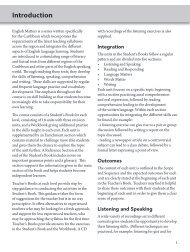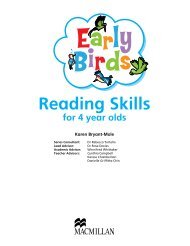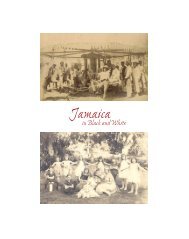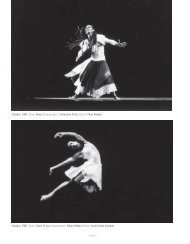Curry, Callaloo & Calypso - Macmillan Caribbean
Curry, Callaloo & Calypso - Macmillan Caribbean
Curry, Callaloo & Calypso - Macmillan Caribbean
You also want an ePaper? Increase the reach of your titles
YUMPU automatically turns print PDFs into web optimized ePapers that Google loves.
14<br />
Cocoa on the tree<br />
Peewah<br />
Archbishop’s House<br />
Coconut and coconut milk were both eaten raw<br />
and used as an ingredient in their cooking. They made<br />
dumpling soup with roasted cocoa bean, coconut milk<br />
and cassava, and fish was especially enjoyed in soups,<br />
hence the birth or our own ‘fish teas’.<br />
When the Spanish came, with the arrival of Columbus,<br />
they brought with them a more sophisticated cuisine.<br />
They too used corn in abundance but they made<br />
pastelles and arepas, two very familiar dishes that we<br />
still enjoy today. The Spaniards also enjoyed wild meat<br />
and salted fish, or bacalao.<br />
The years 1777 to 1787 saw the arrival of the French<br />
planters, who brought with them their slaves, amongst<br />
whom were a number of excellent cooks. The food was<br />
becoming more plentiful and exciting. The art of making<br />
coconut butter was a household one, and children were<br />
fed fresh cows’ milk and tannia as a large part of their<br />
diet. The French enjoyed a diet rich in wild meat, roast<br />
suckling pig, vegetables and provisions.<br />
Salted fish and salted meats were imported mainly for<br />
their slaves, who were fed on a mixture of vegetables<br />
and provisions, cooked with coconut and occasionally<br />
flavoured with salt meat. They called this sancocho,<br />
and nowadays we still enjoy this dish as a thick soup<br />
flavoured much the same way. The addition of salted<br />
meats is evident today in many local recipes such as<br />
callaloo, split pea based soups and stew peas.<br />
The planters brought French bread with them, which<br />
we enjoy as hops, a dry and crusty roll. In those days<br />
there were a lot of pig farms around the East Dry River<br />
area, enabling the French settlers to make pudding and<br />
souse from the pigs’ blood and trotters respectively after<br />
they were killed. These are still popular delicacies and a<br />
major part of our culinary heritage. ‘Pudding and hops’<br />
is a popular evening meal for many today.<br />
As settler immigration increased, each group brought<br />
their own slaves and in return each set of slaves brought<br />
with them varied ways in the kitchen. At this time the<br />
stage was set for African customs. We must remember<br />
that the slaves did not eat the same foods as their<br />
masters. They would make their own dishes from what<br />
was left over by the great house. While the masters<br />
feasted on wild meat their slaves used the dasheen bush<br />
to make callaloo and ate this with cassava foo-foo. They<br />
also made paime instead of pastelles with the corn and<br />
banana leaves.<br />
9780230038578.indd 14 25/07/2011 13:08

















